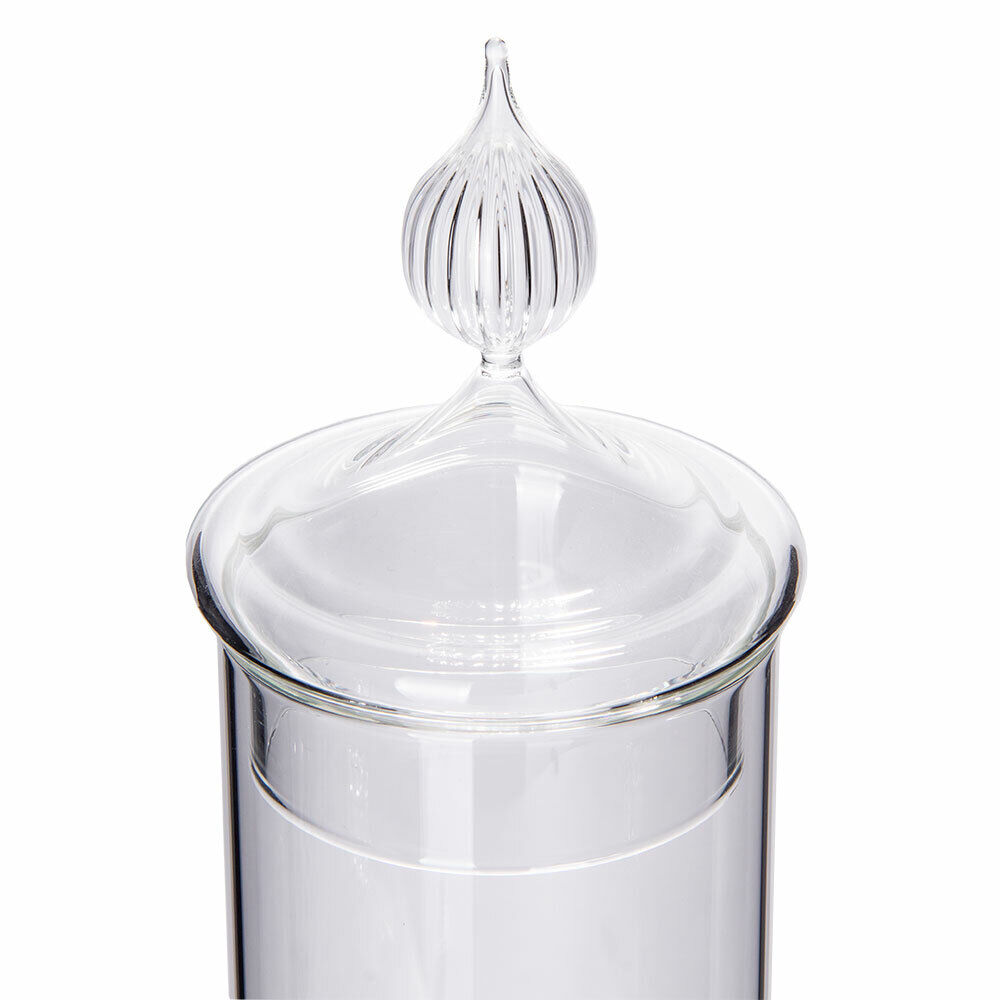-40%
ALANDIA Absinthe Fountain Petite | Mouthblown Glass | 2 Spouts | Easy Handling
$ 52.74
- Description
- Size Guide
Description
TheAbsinthe fountain Petite
with its
2 instead of 4 taps
is a slightly smaller fountain. This makes it handier and easy to stow away after use. It is made of premium
mouth-blown glass
, the taps can easily be unscrewed, which stands for an easy cleaning of the fountain. The taps are made of plastic to prevent breakage when in contact with the glass. They are silver-plated for a beautiful look. An Absinthe fountain is probably the most fascinating Absinthe accessory you can buy. Because with a fountain you can get
the best louche
. The louche is the white turbidity that occurs when the Absinthe mixes with water. Since a fountain, unlike a water carafe, only lets the water flow drop by drop into the Absinthe, the cloudiness begins more slowly and you can experience a true spectacle. If you are enthusiastic about authenticity and sophisticated drinking culture, you should buy an Absinthe fountain. In addition, we can tell you that such a fountain is the ultimate eye-catcher when friends come over for a visit! In this regard, investing in an Absinthe fountain is an investment that pays off in many ways :-).
Quality Note:
The ALANDIA Absinthe fountains are made in Europe by a glassblower manufactory with a long tradition. They are distinguished from visually similar fountains by their
precise manufacturing without craftsmanship defects
(there are no crooked taps, asymmetries in the glass or too thin glass, which can lead to predetermined breaking points). You will not be dissapointed by its quality.
Absinthe: Why was it banned?
At the time of the ban, the Green Fairy was considered a drink that made people go crazy and violent. A spectacular murder case in 1905 was decisive: Mr. Jean Lanfray, a Swiss farmer with an obvious alcohol problem, murdered his wife and children while intoxicated. Appalled by the brutality of the act, a trigger was quickly found: The devilish schnapps absinthe, for in addition to several glasses of wine and cognac, the farmer had drunk a glass of the high-proof spirit. The prohibitionists had found what they were looking for, and now they had a media-effective event that justified their interests in banning the drink. In their opinion, absinthe was poisonous, causes hallucinations and leads to a decline of morals and social order. The only help is a ban!
The murder case was a decisive point for the prohibition of absinthe, as it intensified the discussions about the drink, its ingredients and its effects. At first glance, the story seemed to show clearly what absinthe can do diabolical things. However, the farmer had already drunk a lot of (other) alcohol that evening before he finally added two glasses of absinthe. This fact, however, was concealed because the drink was already considered poisonous by many parts of society. The Green Fairy had to be used more and more as a scapegoat for all social problems. Last but not least, the wine industry advocated a ban, because absinthe producers were new competitors on the market, which could be easily removed by banning the drink.
So the question whether absinthe is poisonous or not has always been asked. Fact is, real absinthe is made from wormwood and wormwood contains the active ingredient thujone. Thujone can actually be poisonous. Nevertheless, thujone is only harmful to health in very high doses. Absinthe does not contain so much thujone that we have to worry about our health. This means that absinthe is not poisonous and has therefore been legalized again. It is important to mention here that absinthe did not contain thujone anymore in the past. Historical absinthes were analyzed and the amount of thujone was below the legal amount of today: 35 mg/liter.
Absinthe: How to drink it
First fill the absinthe glass with 0.7 oz (20 ml) of absinthe and then fill the absinthe spoon with one or two sugar cubes. Then pour cold water from an absinthe carafe (or absinthe fountain) over the sugar. Now the Absinthe starts to cloud over, the "Louche" starts. The Absinthe is ready when Absinthe and water are completely mixed. We recommend a mixing ratio of one part Absinthe to three parts water. In the times of the Belle Époque people used to meet at the so-called "Heure Verte", the green hour to drink their glass of Absinthe.
The Absinthe Fountain Set comes with a free drinking instruction card
.













